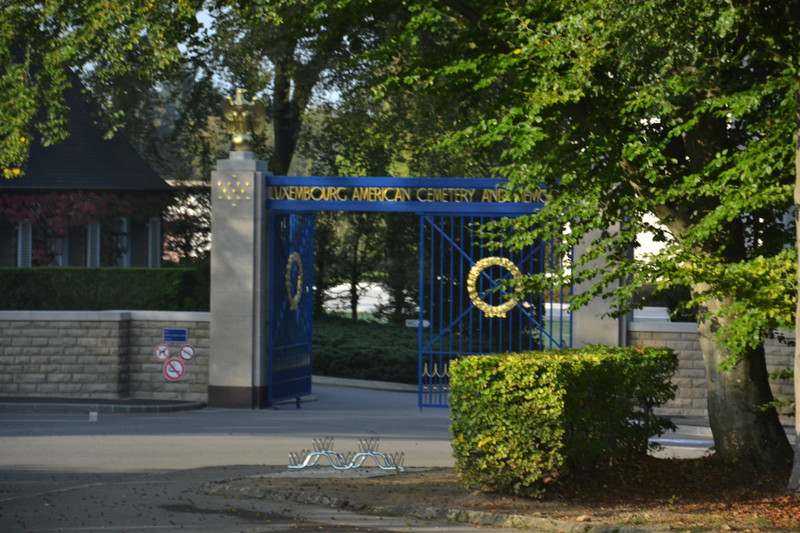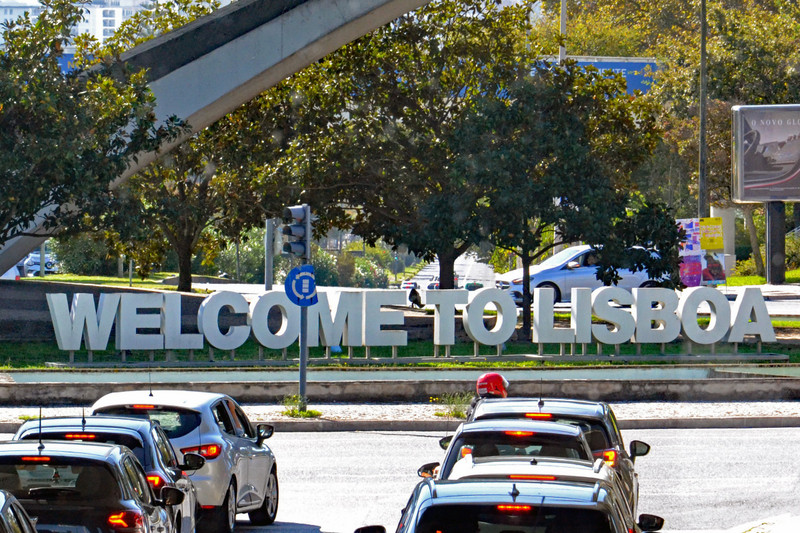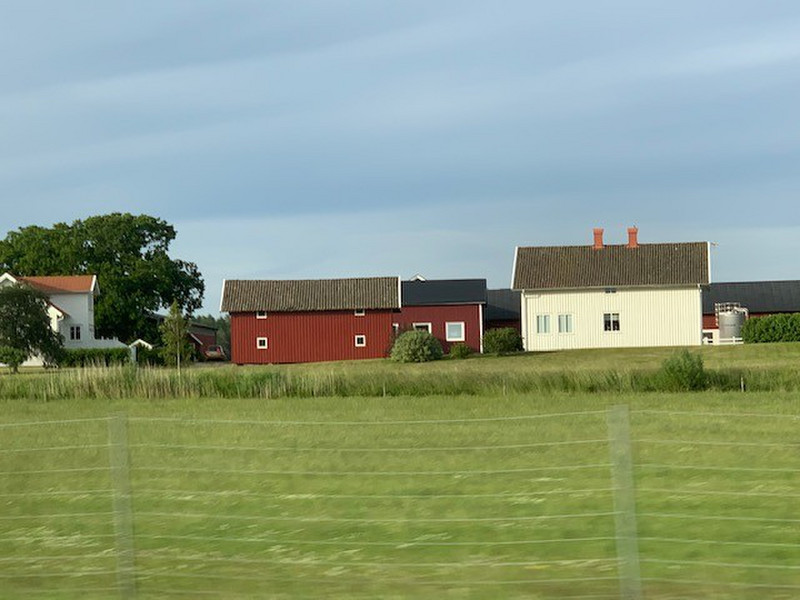Entrance to Luxembourg American Cemetery. The cemetery contains the graves of 5,076 service members who were killed in the Battle of the Bulge and the advance to the Rhine during World War II. Established in 1944 and dedicated in 1960. DSC_0313
Our hotel in Luxembourg, the Novotel, was located in the Kirchberg neighborhood. The Kirchberg Plateau is an area in northeast It is not as well known by visitors as the historic center of the old city. Kirchberg was once part of the Luxembourgs extensive and housed Fort Thungen. From the demolition of the fortifications in 1867 to the War 2 period, Kirchberg was a rural residential suburb. Modern development of the area began in 1963 with the opening of the stylish red Charlotte Bridge between Kirchberg and the old city. (Try as I might, I could not get a photo of it!) Kirchberg soon became a banking center and then a center for the European Union with the construction of EU agency headquarters and office buildings in the 1990s. There was only one tall building in the vicinity when I visited Luxembourg in 1970. Now it was the center of the action. Parks and modern public sculpture have been added to round out the cityscape, so that Kirchberg today is a very modern looking part of the city. Im reminded of the planned development of Brasilia. Its still under construction too, as roads around the hotel
Memorial Chapel. Luxembourg American Cemetery. The cemetery contains the graves of 5,076 service members who were killed in the Battle of the Bulge and the advance to the Rhine during World War II. Established in 1944 and dedicated in 1960. DSC_0314
were torn up with additions to the Konrad Adenauder Building, the Secretariat of the European Parliament, in progress. A map at the hotel showed the many planned additions to Kirchberg. Many public facilities, such as the Bibliothque nationale de Luxembourg, are moving here from the historical center.
Wednesday morning sightseeing in Luxembourg began with a drive through the Kirchberg. I enjoyed seeing all the variations of modern architecture on display here. The best was the air Luxembourg Philharmoinie concert hall. I hoped one of these modern buildings would turn out to be a library, but not so.
Our next objective was to visit the Luxembourg American Cemetery. The cemetery, containing 5,074 American war dead, was established in 1944 and formally dedicated in 1960. It is the burial place of George S. Patton. The grounds include a Memorial Chapel and panels depicting the Battle of the Bulge and the Rhineland Campaign. Interments are are from those theatres of the war.
Next, we returned to the historical part of the city to drive through the Casemates du Bock, but not visit them. (I was able to explore inside the fortifications in 1970.) Luxembourgs cliffside fortifications were built between
Memorial Chapel. Luxembourg American Cemetery. The cemetery contains the graves of 5,076 service members who were killed in the Battle of the Bulge and the advance to the Rhine during World War II. Established in 1944 and dedicated in 1960. DSC_0315
the 16th century and 1746 variously by the Spanish, French, and Austrians. The fortifications offered view of the Alzette and Petrusse river valleys from the plateaus of Luxembourg. There were three rings of fortifications facing each direction. All of them were dismantled following the Treaty of London of 1867, though ruins remain throughout the city. Luxembourg City is built on several plateaus, with the Alzette and Ptrusse rivers cutting wide valleys between them. (Hence the Bock Casemates defensive fortifications looked out upon the valley of the Alzette and the Ptrusse Casemates over the valley of the Ptrusse.) Two long railway viaducts cross the river valleys. The coach let the group off at Constitution Square for a walking tour of the Upper Town (Haute Ville).
In Constitution Square is the prominent Monument of Remembrance. It was erected Luxembourg casualties in World War I.









